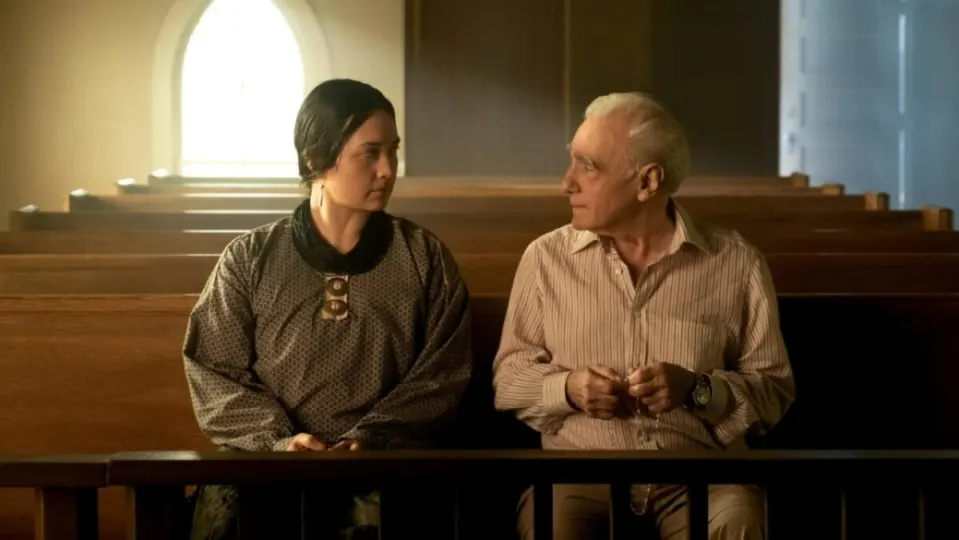Killers of the Flower Moon is Martin Scorsese’s next big film. At 80 years old, the director is suffering from the fact that he can no longer make films at the pace he would like to while he signs one of the titles that could be a smash hit at the Oscars in 2024. With Leonardo DiCaprio and Robert De Niro as its main assets, Killers of the Flower Moon looks set to be an unrelenting box-office and critical phenomenon. But most surprising of all is its story.
Scorsese’s upcoming film is based on the book Killers of the Flower Moon: the Osage Murders and the Birth of the FBI. Written by journalist and writer David Grann in 2017, it was a trend-setting book at the time and became a huge hit both in the United States and around the globe. And the fact is that its story puts its finger on a very important topic that had rarely been touched on before.
Here is the true story of Killers of the Flower Moon, one that Martin Scorsese will explain much better, but which has all the necessary elements to become one of the best films in the history of contemporary cinema.
A terrifying story about racism
The story is set in Oklahoma in the 1920s. At the beginning of the 20th century, the Osage Nation Indians had been expelled from their homeland in Oklahoma by the Americans. As a result, they had to relocate to the northwest of their land, in an area that no one wanted a priori because it was “rocky and infertile“.
However, karma acted instantly and the Indians ended up in an area that, although no one understood its value, soon turned out to be a nest of riches. They discovered that, underneath the supposedly infertile land, a huge amount of oil was hidden. It was an unexplored tank from which they could squeeze all the juice they wanted.
At a time when the automobile industry was just beginning to emerge, this discovery caused an entire indigenous community to beat capitalism in its own battle, and they began to pass dozens of the businessmen of the day on the right.

This event caused those who were seen as savages and poor to suddenly wear more expensive jewelry than anyone else, dress better and live in large mansions, surrounded by white servants who tipped the scales. Of course, this twist on stereotypes didn’t sit well with everyone… and soon the drama began.
In the early 1920s, those who were once viewed with a mixture of envy and respect, soon began to be killed. The members of the tribe began to drop like flies and disappear in a mysterious way, and although they began to investigate, between the little importance given to them and the hidden interests that existed, it took years to find the culprit.
Finally, it was discovered that it was all part of a conspiracy in which all kinds of people were involved… although all of them were white. These ranged from doctors, who helped create the poisons that would kill the Osages, to police and agents who were complicit or pretended nothing was happening, to funeral home workers who covered up the murders, to journalists who refused to cover what happened.

Among them all was also Ernest Burkhart, nephew of local businessman William Hale – who was fully implicated in the murders – and husband of Mollie Burkhart, an Indian woman who is extremely wealthy. Ernest Burkhart is the character played by Leo DiCaprio in the film, and he is a man who is caught between two lands: between the love of his wife and family and the dark plot of his uncle and the rest of the men of his ilk.
But things get more complicated. Mollie’s family quickly becomes the target of the conspiracy, leading to the murder of the three sisters, including Mollie. One of the sisters was poisoned to death, another shot to death and another in an explosion. It is clear that the murderers had all the resources to do whatever they wanted.
The situation became so complicated that, finally, someone tried to put a stop to it. The young J. Edgar Hoover was a newly hired FBI agent, a department that, until now, had not been in charge of major cases. But this was the first plot uncovered by the department, which began to grow into what it is today. The organization went so far as to directly imprison the killers, but it turned out that it only complicated things because of its unprofessionalism and the secrecy behind the case.

However, a new man was put in charge of the investigation: Tom White, played by Jesse Plemons in the film. White was a forest ranger, but seeing what was going on, he made himself available to the FBI and they ended up giving him the case. He was the one who managed to uncover William Hale, the businessman played by DeNiro who nobody knew where he came from but who arrived in the land of the Osage suddenly and without anyone knowing anything.
Pulling on Hale’s thread he began to uncover the case, but he was someone with too much power. He had great charisma and controlled everyone involved in the plot, from the first to the last, so it was a very difficult job that didn’t even end as well as expected. Both Hale and the rest of the assassins were released shortly after being imprisoned, and none of them had too many repercussions. In the forgotten 1920s, racism was not as punishable as it should have been.
Some of the links added in the article are part of affiliate campaigns and may represent benefits for Softonic.


